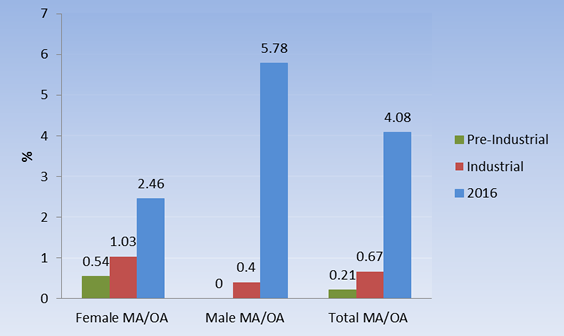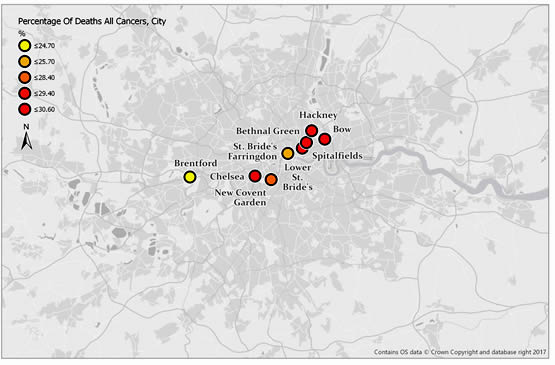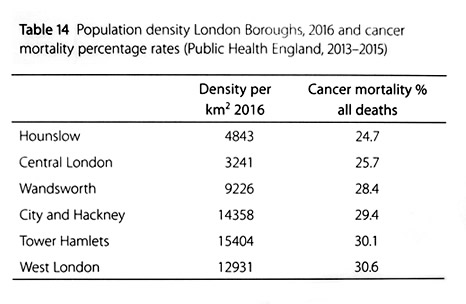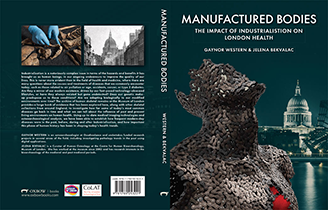Was cancer common in the past?
We looked for evidence of metastatic bone cancer and multiple myeloma in the human skeletal remains of 1371 individuals, using radiography to undertake a survey of the femur, pelvis, lumbar vertebrae and cranium.
We found relatively few cases of metastatic bone cancer in our past populations, compared to estimates of rates that occur today. We found that not only had rates of metastatic bone cancer increased over time but that they had increased rapidly since the Industrial Period. In our skeletal populations, the highest number of cases was among Londoners living in the Industrial period.
We also found the same pattern with multiple myeloma. It is still a relatively rare disease, but we found that rates of multiple myeloma had doubled since the Industrial period in today’s UK population. In our skeletal populations, cases were very rare and all the cases we found were in Londoners living in the Industrial period.
While we know that cancer existed in the past and has been present in human populations throughout our history, our data indicates that the urbanisation of London and the industrial developments of its later history have acted as a catalyst to increasing cancer rates. Industrialisation appears to have led to living environments and lifestyles that have kick-started our increased risk to this disease today.
Rates of cancer have really taken off in our more recent history. For example, multiple myeloma rates since the 1970’s have increased by 60% in the UK, according to Cancer Research UK. Higher rates of death from cancer are often still tied to urban living in England and low status areas within London. London and North Shields had the highest rates of cancer deaths in our modern day sample.
Cancer mortality today within London is strongly linked to population density, and this pattern has also been found in other countries. Particular types of cancer, however, may be higher in some areas where overall rates of cancer deaths may be lower. For example, Salford has lower cancer mortality overall than either Chelsea and Kensington or Tower Hamlets but has much higher rates of lung cancer, obesity and smoking. The picture is complex because of the diversity of living environments and the effects these have on specific cancers.
Increased risk factors such as smoking, lack of physical activity, poor quality diet and obesity are higher in areas of economic deprivation. However, areas of lower socio-economic status also often have a lower uptake of screening programmes, leading to a lower chance of survival. Population density can also put pressure on health care services. An overcrowded urban environment makes providing accessible care and the latest treatments challenging. According to a patient survey by the Cancer Commissioning Strategy for London, nine out of the ten worst hospitals for cancer care in England and Wales were identified as being in London.
Next: Cancer: The future











